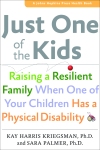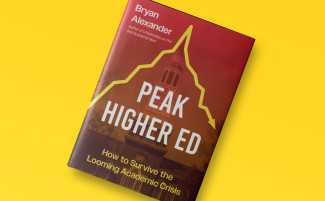guest post by Kay Harris Kriegsman, Ph.D. and Sara Palmer, Ph.D.
“I look at her waking up of a morning. I sit right outside her bedroom door so she’ll see me there and feel safe knowing her granddad is there. We’ll build tents and take our flashlight inside. It’s given me an appreciation for what we have each day.”—Ned, a grandfather
Becoming a grandparent is most often a joyful event. Grandparents look forward to re-experiencing the wonder of new life, to playing with baby and watching him grow through the stages of childhood—especially fun when he can be given back to his parents at the end of the day! But grandparenting comes with responsibilities, too. Single parents and two-career couples may rely on grandparents to pick up the slack, and older adults who are generally healthier and live longer than in past generations may have more energy and time to be part of their grandchildren’s lives. In fact, the American Association of Retired Persons announced in 2011 that about 70% of grandparents help with their grandchildren, providing emotional support, practical help, or financial assistance.
Even a grandparent who doesn’t help on a regular basis can be a parent’s “ace in the hole,” stepping in to soothe frayed nerves or care for children when the family experiences unusual demands such as moving, divorce, or changing jobs. When a child is born with a physical disability, or acquires a disability through injury or disease, the family requires a period of readjustment, and grandparents are often eager to help. Their support can be critical to their children’s success in meeting the needs of
all their children.
Grandparents can enrich the family by helping in numerous ways, but “help” should not demean or undermine parental authority. Grandparents can be a sounding board for decision making, without trying to
make the decisions
for their adult children. They need to be sensitive to what their children and grandchildren need from them at different moments—is this a time to be “waiting-in-the-wings” or a “you’re needed now!” time? If grandparents miss their cue, parents can redirect them; flexibility and communication are critical to managing parent-grandparent relationships.
Grandparents want to be in on the highs and lows of their children’s and grandchildren’s lives, but their location may influence the ways they can be involved. When grandparents live far from their grandchildren and travel is not possible, technology is the answer; grandparents can connect with their grandkids through telephone calls, e-mail, Skype, Twitter, or Internet video chats. Increasingly, tech-savvy grandparents have even joined the world of texting! Grandparents who live near, but not with, their adult child’s family, can more easily balance regular time with the grandkids. But grandparents who live in the same house with their child and grandchildren are privy to the workings of their child’s nuclear family system, to some extent becoming part of it. This can be rewarding for everyone if roles and boundaries are clearly defined. The family will run smoother if grandparents remember to support the parents’ roles and rules.
When grandparents are able to give it, practical support (housework, babysitting, chores, etc.) is invaluable to parents. When Susie, a single mother of four, including twins with physical disabilities, had a ruptured disc, her parents kept the children at their house for six weeks. This gave Susie time to recuperate, and gave her parents some “real, 24-7” time with their grandsons, enabling them to get to know each other better. Other grandparents make play dates with their grandchildren or take dinner to their children’s family; Helen often babysits overnight so her son and his wife can have a break from parenting. This type of help for parents also doubles as time for grandparents to enjoy and get closer to their grandkids.
When a grandchild has a physical disability, he may have additional needs related strictly to his disability. As a grandparent, learning the new skills involved in caring for that grandchild—such as catheterizing and bracing—can be both challenging and exhilarating. Learning these hands-on skills opens up new possibilities for spending time with grandchildren, for example, overnight visits or trips together. Grandparents handy with tools can help make their child’s home more accessible for the grandchild with a physical disability by putting in ramps or lowering light switches, building a “desk” that fits across his grandchild’s wheelchair, or making custom built-ins in her room so she can reach her toys and books.
Grandparents can also play a role in facilitating the family’s attitudinal adjustments. Typically inclined to love their grandkids unconditionally, grandparents may initially be more accepting of a grandchild with a physical disability. They can help the family focus on their grandchild’s
abilities without losing sight of the fact that disability may add some challenges. Some grandparents follow the parent’s lead as they expand and redefine their vision of a “normal family,” but other grandparents are a step ahead in seeing the family in a new light.
Through their relationship with a “mixed bag” of grandchildren—those with and without physical disabilities—grandparents can enrich the life of grandchildren, give parents a break, and encourage the creation of an inclusive family. These grandparents have a unique opportunity to develop personal strengths—patience, compassion, self-confidence, optimism, a sense of gratitude for the small things in life—and to reach their own potential as human beings.
 Kay Harris Kriegsman, Ph.D., is a practicing psychologist and consultant on disability issues. Sara Palmer, Ph.D., is an assistant professor in the Department of Physical Medicine and Rehabilitation at the Johns Hopkins University School of Medicine. Together they wrote Just One of the Kids: Raising a Resilient Family When One of Your Children Has a Physical Disability and, with Jeffrey B. Palmer, M.D., are coauthors of Spinal Cord Injury: A Guide for Living.
Kay Harris Kriegsman, Ph.D., is a practicing psychologist and consultant on disability issues. Sara Palmer, Ph.D., is an assistant professor in the Department of Physical Medicine and Rehabilitation at the Johns Hopkins University School of Medicine. Together they wrote Just One of the Kids: Raising a Resilient Family When One of Your Children Has a Physical Disability and, with Jeffrey B. Palmer, M.D., are coauthors of Spinal Cord Injury: A Guide for Living.



